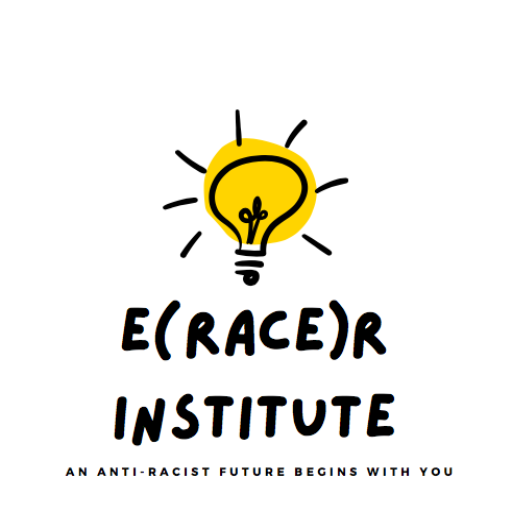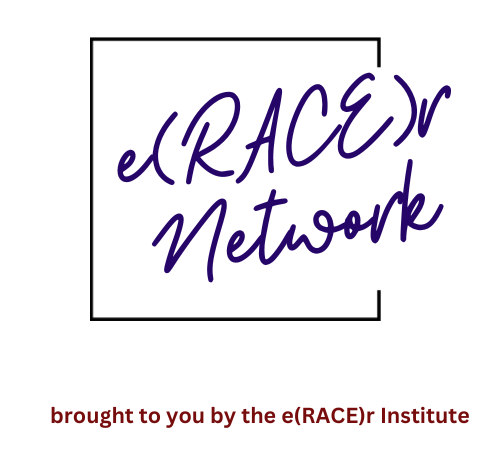I had an epiphany!
While reflecting on decades of doing anti-racist work, it suddenly hit me. I was keeping my anti-racist work separate from my own personal growth work.
For August, I would like to share with you what happened when these two worlds collided.

An odd starting point
I was reading about the power behind the stories we tell ourselves. In fact, I was working diligently to ensure that my inner talk (you know, the non-stop chatter that adds flavourful commentary to pretty much every choice you make) was aligned with my personal goals.
I knew what I wanted:
I wanted to be a good mother…
… and wanted to be a solid friend.
I wanted to be a powerful social justice advocate…
… and I wanted to be a courageous public speaker.
And yet, despite moving steadily towards these goals something was a little “off.”
Something wasn’t sitting right
Like so many anti-racist practitioners, I assumed that doing the personal work was likely where I had missed something.
So one day I paused to document the growing number of personal development courses I had taken.
One stood out:
It was a parenting course that I had completed in 2012 following the passing my late partner.

I know, I know… just trust me on this one, okay?
At the time, I was struggling to get grounded. I was holding our children’s grief and my own. I was thoroughly overwhelmed. On a bit of a whim, I contacted the Jai Institute for Parenting and in no time I was on the phone with Jolette Jai, one of it’s co-founders.
Jolette explained to me what this program could do. It brought together nonviolent communication strategies and high level brain science that touted the power of understanding emotional intelligence in children. And Jolette shared one more thing: she said it would profoundly change my world.
Now, there was 1 simple question to answer:
Was I truly committed to change?

I signed up right away.
And as I moved deeper into the work, I was introduced to the power of the stories we tell ourselves. And, in those stories, I found a plethora of limiting beliefs that were standing in my way as I tried to move my family from where we were to where we wanted to be.
Connecting Storytelling and Limiting Beliefs
Grappling more intentionally with my inner storyteller, I began to understand what “limiting beliefs” actually meant.
These beliefs were ideas we held onto that limited our imagination about the world, about each other, and about our selves.
Now remember: beliefs are just thoughts that you think on repeat. And so if we are playing and replaying a set of stories in your mind that insist that things can’t change, or everything sucks… well… we start to believe our own stories no matter how much they hurt.

When it came to parenting, my patterns of negative thinking were often tied to experiences I had in childhood. In fact, I remember filling out a worksheet with questions like, “How did your parents express their love for you?” In free writing my response, I realized that we were a funny family – we liked to laugh a lot. But we also navigated violence and anger and pain. There really wasn’t a space to say “I love” regularly.
The power of our inner storyteller
Now that story of “how to express love” was taken up by my inner storyteller. And she was telling me all types of things:
- There’s no time to stop and say “I love you.” You have way more important things to tell these kids.
- Did you see what they just did?!? Are you really going to stop and say “I love you” when they made that mess?
- Saying “I love you” isn’t going to teach them responsibility.
The power of our (limiting) beliefs
Based on these stories, a slew of beliefs starting to creep into my subconscious mind…
- Loving them through this is not going to work…
- These kids are being bad…
- I need to force them to listen to me…
And that’s when the Jai Institute shared another simple question to consider:
Is that belief serving you?
This question wasn’t about saying my beliefs were “good” or “bad.” Beliefs are simply thoughts we have. And these thoughts have power because they guide our behaviours. The real question was whether or not I liked the direction I was going.
Folks, my kids were grieving. I was grieving. And the world just kept on turning.
I was putting pressure on myself to carry on as if nothing had happened, but something major had actually happened. In fact, something major was actually happening! In order for me to truly guide us on our healing journey, I had to stop, breath, and recognize that these beliefs were simply not serving me or us.
Disrupting our Limiting Beliefs
I wanted my children to feel loved, felt, and seen. And I wanted that for myself too. I also wanted to create a family unit that was supportive, empathetic, and kind. Beliefs like “loving them through this isn’t going to work ” and “I need to force my kids to listen to me” were literally limiting my ability to visualize and co-create the family unit that I wanted.
It was time to shake things up.
I learned to substitute these limiting beliefs with new thoughts that DID serve us:
Enter new belief #1
Instead of “Loving them through this is not going to work” I thought “Love is a powerful, healing tool.” Love allows us to stop and connect. Love let’s me hear my children’s needs and honour their feelings. In fact, as I tried to help my children through their grief this story about the power of love was simply more helpful.
Enter new belief #2
I shifted “These kids are being bad” to “What are my kids trying to tell me with this behaviour?” When I witnessed them do something I once labeled “bad,” I released my desire to judge them. Instead, I acknowledged the behaviour while telling them how it made me feel. I said things like, “Hey, did you know that when you throw your toys or scream it makes me feel overwhelmed and sad because I don’t know how to help you?” And then I would ask them to take a minute and breath with me. When we were calmer, we could figure out our next steps.
Enter new belief #3
And when I thought, “I need to force them to listen to me,” I moved to “I wonder why they are doing this?” From there, I would literally guess and share my guesses with them. I never thought it would work. But it did. All of a sudden the kids felt seen. And when they felt seen, they were open to finding new ways to express the big emotions they were feeling.
Folks, that’s when it hit me.
That last belief – the one about forcing people to listen to me – was impacting more than my parenting. It was limiting how I d into my anti-racist work.

And because I was committed to being anti-racist, I was recommitting to doing the work differently by challenging my inner storyteller and re-thinking the ideas that held me back not only from imagining, but also from creating an anti-racist world.


